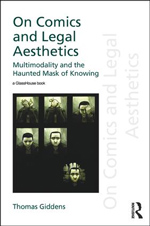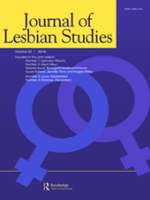Im Monitor werden in unregelmäßigen Abständen aktuelle Publikationen aus den letzten 6 Monaten vorgestellt, die für die Comicforschung relevant sein könnten. Die kurzen Ankündigungstexte dazu stammen von den jeweiligen Verlagsseiten. Haben Sie Anregungen oder Hinweise auf Neuerscheinungen, die übersehen worden sind und hier erwähnt werden sollten? Das Team freut sich über eine Mail an redaktion@comicgesellschaft.de. -> Zu früheren Monitoren.

Weltentwürfe im Comic/Film:
Mensch, Gesellschaft, Religion
Theresia Heimerl und Christian Wessely (Hrsg.)
Schüren
372 Seiten
ISBN 978-3-89472-941-7 (Paperback)
~€ 29,90
April 2018
Verlagsseite
Comics, bis in die späten 1990er-Jahre oft als kulturelles Randprodukt gering geschätzt, geraten in Zeiten der multimedialen Kommunikation zunehmend in den Aufmerksamkeitsfokus. Im Comic erscheint das Bild auf das Allerwesentlichste hin destilliert und durch das Medium Text erweitert. In einem bis wenigen Bildern lassen sich so, optimiert für die Aufmerksamkeitsspanne der Web 2.0 – Generation, weltanschauliche, religiöse und soziale Probleme formulieren und zugleich scheinbare oder tatsächliche Lösungsvorschläge transportieren. Ihr Potential für ein Millionenpublikum entfalten sie in den letzten Dekaden aber durch zahlreiche Verfilmungen, ob als Anime, Arthouse oder Blockbuster. Die Erforschung dieses Potentials ist noch weitgehend unentdecktes Gebiet. In diesem Band werden erste Akzente gesetzt.

On Comics and Legal Aesthetics:
Multimodality and the Haunted Mask of Knowing
Thomas Giddens
Routledge
230 Seiten
ISBN 978-1-1382-2403-2 (Hardcover)
~£ 92,00
April 2018
Verlagsseite
What are the implications of comics for law? Tackling this question, On Comics and Legal Aesthetics explores the epistemological dimensions of comics and the way this once-maligned medium can help think about – and reshape – the form of law. Traversing comics, critical, and cultural legal studies, it seeks to enrich the theorisation of comics with a critical aesthetics that expands its value and significance for law, as well as knowledge more generally. It argues that comics’ multimodality – its hybrid structure, which represents a meeting point of text, image, reason, and aesthetics – opens understanding of the limits of law’s rational texts by shifting between multiple frames and modes of presentation. Comics thereby exposes the way all forms of knowledge are shaped out of an unstructured universe, becoming a mask over this chaotic ‘beyond’. This mask of knowing remains haunted – by that which it can never fully capture or represent. Comics thus models knowledge as an infinity of nested frames haunted by the chaos without structure. In such a model, the multiple aspects of law become one region of a vast and bottomless cascade of perspectives – an infinite multiframe that extends far beyond the traditional confines of the comics page, rendering law boundless.

“Suffering Sappho!”:
Lesbian Content and Queer Female Characters in Comics
Special Issue of Journal of Lesbian Studies
Michelle Ann Abate, Karly Marie Grice und Christine N. Stamper (Hrsg.)
Taylor & Francis
ISSN 1089-4160
Mai 2018
Verlagsseite
Comics have been an important locus of queer female identity, community, and politics for generations. Whether taking the form of newspaper strips, comic books, or graphic novels and memoirs, the medium has a long history of featuring female same-sex attraction, relationships, and identity. This special issue explores the past place, current presence, and possible future status of lesbianism in comics. It features essays about cartoonists such as Jennifer Camper, characters such as Wonder Woman, and titles such as Lumberjanes. This special issue also includes a roundtable that examines underrepresented identities in lesbian comics. These pieces address subjects ranging from the depiction of a Latina lesbian protagonist in AMERICA: The Life and Times of America Chavez and the debut of the first lead Black lesbian female superheroine in Cyberzone to the presentation of queer women in graphic novels from South Asia and the experience of re-reading Hothead Paisan in the age of Trump.
Laura M. Jiménez: PoC, LGBTQ, and gender: The intersectionality of America Chavez
Margaret Galvan: Making space: Jennifer Camper, LGBTQ anthologies, and queer comics communities
Sheena C. Howard: Situating Cyberzone: Black lesbian identity in comics
Cynthia Barounis: Survival angst: Reading Hothead Paisan in the Trump era